WHEAT
The staple food in the world, wheat is an annual plant that belongs to the Poaceae grass family. While it is mostly used to produce grains, it can also be used as hay or pasture. Wheat was first domesticated in the Near and Middle East around 7500 BC in the area known as the Fertile Crescent. With the selection and hybridization of farmers, different types of wheat such as Common bread wheat, Durum and Spelt wheat emerged. In time, wheat cultivation spread to the Balkans and then expanded to Europe. Wheat is a great source of carbohydrates as well as vitamins and minerals. Due to being rich in carbohydrates, wheat has become the staple food, meeting daily intake requirements. Wheat also contains protein. Depending on the type of wheat, it might contain protein between 8.5% to 15%. On a side note, wheat can be problematic due to containing gluten which is a protein that is known to cause side effects in some people. Celiac disease, wheat allergy and non-celiac gluten sensitivity are some of the problems people might face when it comes to gluten consumption. However, many people don’t encounter such side effects.
Wheat flour is the most common flour used in baking. There are different types of wheat flour, and they’re distinguished by the amount of gluten they contain.
Guide to Different Types of Wheat Flour
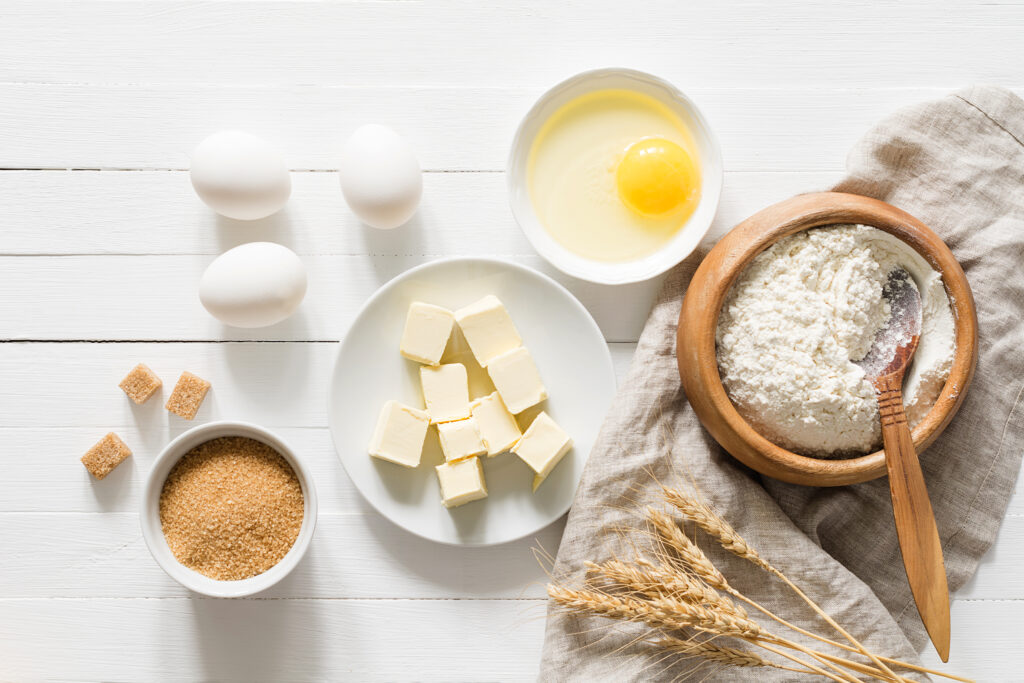
Types Of Wheat Flour
- Wheat Flour Basics
- All-Purpose Flour
- Bread Flour
- Cake Flour
- Pastry Flour
- Self-Rising Flour
- Whole Wheat Flour
Wheat Flour Basics
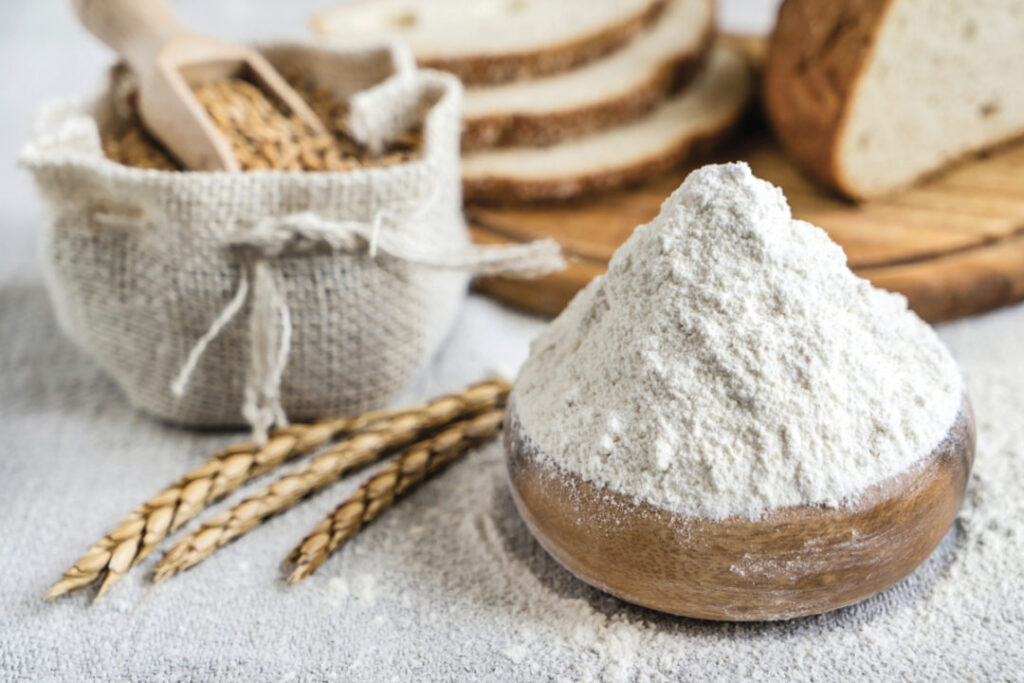
Gluten is the wheat’s natural protein, and it’s what gives baked goods their structure. when the dough is kneaded, these glutens develop and become elastic. Flours made from hard, high-protein varieties of wheat are called strong flours. They have a higher gluten content. Flours made from softer, low-protein wheat are called weak flours and are lower in gluten.
All-Purpose Flour
All-purpose flour is formulated to have a medium gluten content of around 12 percent or so. This makes it a good middle-of-the-road flour that can be used for a whole range of baking, from crusty bread to cookies to fine cakes and pastries. Even though all-purpose flour is a good general flour, most professional bakers don’t use all-purpose flour. Most professional bakers use either bread flour, cake flour, or pastry flour, depending on what they are baking.
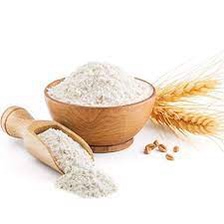
One sifted cup of all-purpose flour should weigh around 4.5 ounces or 125 grams.
Bread Flour
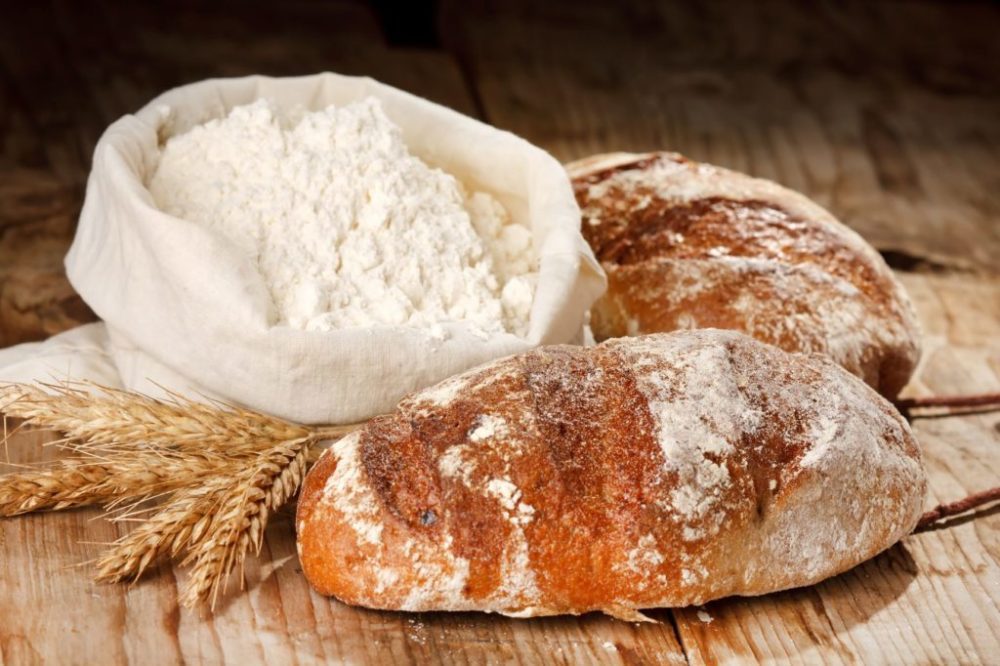
Bread flour is a strong flour, meaning that it has a relatively high gluten content—usually around 13 to 14 percent. A handful of bread flour will feel coarse and will look slightly off-white. Bread flour is used for making crusty bread and rolls, pizza doughs, and similar products.
One cup of bread flour will weigh around 5 ounces or 140 grams.
Cake Flour
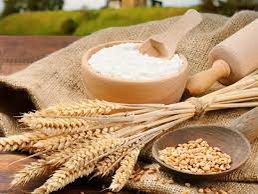
Cake flour is made from soft wheat and has a lower gluten content around 7.5 to 9 percent. Its grains are visibly finer than bread flour, and it is much whiter in color. Its fine, soft texture makes it preferable for tender cakes and pastries.
One sifted cup of cake flour will weigh around 3.5 ounces or 99 grams.
Pastry Flour
Pastry flour is slightly stronger than cake flour, at around 9 to 10 percent gluten. It can be used for biscuits, muffins, cookies, pie doughs, and softer yeast doughs. It has a slightly more off-white color than cake flour.
One sifted cup of pastry flour will weigh just over 3.5 ounces or around 101 grams.
Self-Rising Flour
Self-rising flour is peculiar. It’s ordinary all-purpose flour that has baking powder and salt added to it. Intended as a convenience, it’s anything but—the main problem is that there’s no way to control how much baking powder it contains. Also, when stored in your pantry, the baking powder in the flour will quickly lose its effectiveness as a rising agent. Unless you have no other options, this type of flour is probably best avoided.
Whole Wheat Flour
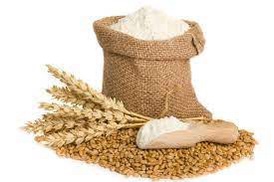
Whole wheat flour comes in two varieties: 100 percent whole wheat flour and white whole wheat flour. One hundred percent whole wheat flour is made from hulled red wheat grain. It provides more fiber and other nutrients than all-purpose flour. Generally speaking, it makes for heavier bread and baked goods and has a shorter shelf life than all-purpose flour. Whole wheat flour is often mixed with all-purpose flour for a lighter texture and better rising. White whole wheat flour is made from hulled white spring wheat, it has a milder taste and lighter color compared to 100 percent whole wheat flour.
One cup of whole wheat flour will weigh 4 ounces or around 113 grams.






